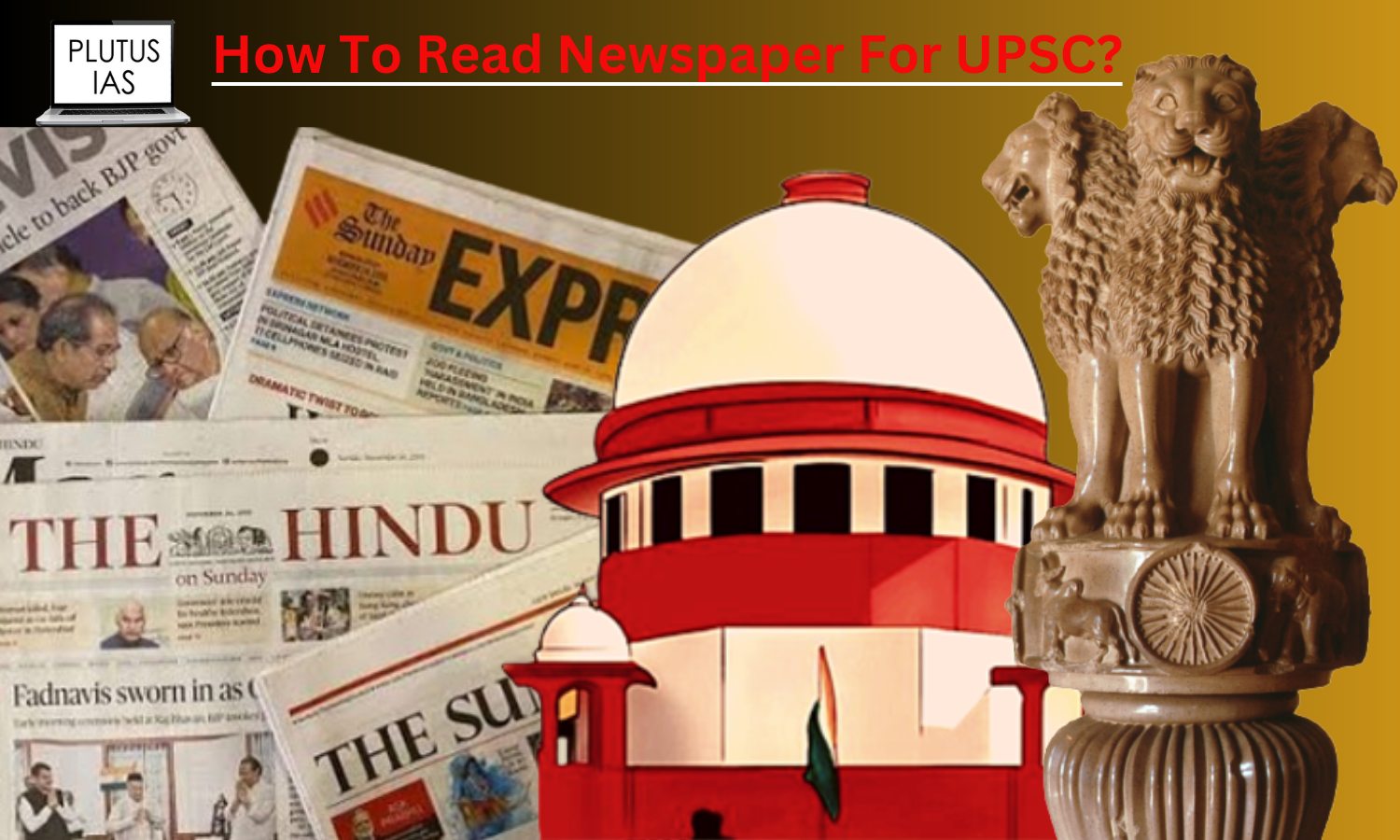
09 Aug How To Read Newspaper For UPSC
The Union Public Service Commission commonly known as the UPSC is a mandated body of the Indian Government. The UPSC conducts exams every year for the selection of candidates for state and centre. The exams conducted for the centre are for the ‘Group A’ posts. UPSC aspirants who wish to crack the exam must keep themselves updated with the news. This is because a large part of the questions in the UPSC exam are based on current affairs. Additionally, being updated with current affairs can help you to write better answers in the mains exam. Reading newspapers is a great way to stay updated, but it’s important to read with a purpose and focus on the news that is most relevant to the exam. In this blog, we will discuss how to read newspaper for UPSC
Which Is The Best Newspaper For UPSC Preparation?
Before we jump into the names of the newspapers and how to read newspaper for UPSC, you must know what makes a newspaper the best choice when preparing for the UPSC. As we all know, UPSC is a very tough exam and has an extensive syllabus. Therefore, in choosing a newspaper, you must always see to it that it covers major topics in your syllabus. Starting from politics to the environment and also science and technology. Also, the editorial section of news is really important as it will help you to form opinion about subjects.
According to our PSIR optional subject expert and an accomplished Ph.D. holder Prof. Bijendra Jha, “Role of a newspaper is to connect the students of the static part of the UPSC syllabus with the dynamic part.” This means that a good newspaper will help you to understand how current events are relevant to the topics that you are studying for the UPSC exam.
If you are looking for English newspapers then there is nothing better than The Hindu and The Indian Express. This is because these two papers have a brilliant editorial section, the news is factually right and the standard of English is high, meaning you will also end up learning new words, have a strong vocabulary, and develop good critical thinking practice.
Also read: How to become an IAS officer after 12th.
Which Section Is The Most Important In A Newspaper?
The editorial part of the newspaper is the most important part. Plutus IAS’s senior faculty and UPSC expert Mr. Sanjeev Kumar says, ”..because it has a critical analysis of government policies, programs & their implementation. It is an assessment and evaluation of various developmental goals of government and people.”
The editor’s opinion on different topics helps the readers see a subject from a different viewpoint and also helps them develop critical thinking abilities on their own. These opinions when added to mains answers help aspirants score better in the exam.
Has The UPSC Current Affairs Gotten Tougher Over The Years?
The UPSC is a funnel that selects the best of students for top bureaucratic posts. While there is always this war of predictability between coaching institutes and students on one side while the UPSC on the other, there are many times when the UPSC throws a curveball and the current affairs section becomes tougher than usual.
However, over the past few years, the UPSC pattern has definitely changed. Before 2010 when there was a set pattern for the prelims exam regarding questions coming from history, geography, science and current affairs. The changed pattern has questions now coming from science, polity, environment, technology, and other topics.
For any exam, your preparation is not complete if you do not check your progress. Plutus IAS provides best of test series, get them now to be a 100% ready for your UPSC CSE exam.
How To Make Notes From Editorials For UPSC?
The trick to know how to read a newspaper for UPSC preparation is very important. Being a UPSC aspirant, the newspaper is the ocean of information. Here It becomes important to segregate less important information from the information that can be relevant to the exam.
First, UPSC aspirants must be well aware of the syllabus. There is no point in learning more information than what is covered in the syllabus. The next step is to have a strong understanding of the static part of the topic and then build on that knowledge to understand the dynamic part of the topic.
Prof. Bijendra Jha advises the students,” Take command of the static part and slowly relate it to the changing circumstances of the government.”
Also read: How to master answer writing for UPSC CSE mains exam
For eg, for the topic of NAREGA, you must know its history. It was passed in 2005 and has since been amended several times. This is where the newspaper comes in.
When reading editorials about NAREGA, you should focus on the following:
- The main points of the editorial
- The arguments and counterarguments presented
- The author’s perspective on the topic
- Any new information that you learn
- By taking notes on these elements, you will be able to better understand NAREGA and how it is relevant to the UPSC exam.
You can also enroll to Plutus IAS current affairs programme and avail PDF UPSC notes for better preparation.
Conclusion
UPSC is a very tough exam. Therefore it becomes really important to know how to read newspaper for UPSC. Hopefully, you found this article helpful. Join Plutus IAS, the best IAS coaching in Delhi with top UPSC teachers from India who will not only help you cover the syllabus but also mentor you into becoming a top IAS officer.
I am a content strategist for competitive exams like, UPSC, NEET, IIT, etc. I have a strong passion for creating content, as demonstrated by my articles. Please check out my other articles; I would appreciate any feedback you may have.



No Comments